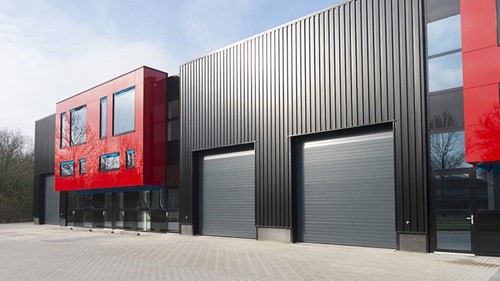CBD office return slows to a trickle
Australians were returning to CBD offices gradually but the shift towards pre-pandemic work life normality stalled over the past month, despite historically low unemployment and workplace enticements.
Australian office workers are trickling back to the CBDs but appear in no hurry to return to business as usual.
Last month saw the gradual return of office workers stall, as the continued spread of COVID-19 and other illnesses, extremely wet weather on the east coast, and industrial action in NSW hampered employees’ ability to attend their CBD workplaces.
More CBD office space was absorbed by companies and organisations preparing for the return to normality but the national CBD office market vacancy rate remained unchanged over the 2021/22 financial year at 14.0 per cent.
Adelaide continued to have the highest occupancy levels across the country, remaining stable at 71 per cent, followed by Perth (65 per cent), then Brisbane, which also remained at 64 per cent.
Sydney’s occupancy rates remained steady at 55 per cent, with a teacher strike and train strikes occurring during the survey period.
Fluctuations week-by-week remain the norm. Sydney and Melbourne recorded peak occupancy levels at 66 per cent and 60 per cent respectively, with low days at 38 per cent and 31 per cent.
The Property Council of Australia's latest Office Occupancy Survey found while Perth’s office occupancy rate continued to improve between May and June, and Melbourne’s lifted slightly, occupancy levels in the ACT declined in the reporting period, with rates in other major cities remaining steady.
The latest office occupancy survey found the preference for greater flexibility, including working from home, was the major driver of occupancy levels, while 79 per cent of respondents (up from 63 per cent in May) believe it will take three months or more for occupancy levels to materially increase.
Space being taken
Not even an economy with near full employment has been enough to fill the offices. Australia’s unemployment rate plummeted to 3.5 per cent in June, the lowest rate in 48 years.
Property Council Chief Executive Ken Morrison said the impact of the spread of COVID-19 and the flu was clearly stalling the return to office.
“Although office occupancy rates have steadily recovered since the beginning of the year, this month there was a clear pause in workers heading to the office,” Mr Morrison said.
“Before the Delta strain hit in the middle of last year, we saw a real resurgence in the return to office and we would expect occupancy to lift again once the current unfavourable impacts subside.
“I don’t think these figures are a reflection of workers not wanting to be in the office, but rather a reflection of people being forced to stay home for a range of reasons, whether it be to care for sick kids, rest themselves or to avoid dangerous weather,” he said.
Office market demand continues to be the emerging story of the pandemic.
- Luke Achterstraat, Executive Director, Property Council NSW
JLL Research released its second quarter 2022 statistics on national office markets on Friday (15 July), revealing positive net absorption of 143,600 sqm was recorded across CBD office markets over the 2021/22 financial year.
JLL Head of Office Leasing – Australia, Tim O’Connor said, headcount growth is directly translating into additional office space requirements, while some organisations are taking a more flexible approach to space requirements and looking to reduce their core office space.
“Organisations are gravitating towards higher quality assets as health and wellness, sustainability and building amenity grow as important factors for employees,” he said.
“The move towards higher quality assets will increase vacancy pressures on secondary grade assets and owners will have to inject capital expenditure into these assets to remain relevant in the leasing market.”
The Brisbane CBD was the strongest CBD office market over the 2021/22 financial year, recording positive net absorption of 40,800 sqm. However, the Brisbane CBD vacancy rate remains elevated at 15.4 per cent. All state capitals recorded positive net absorption of office space.
Yoga, golf and fireplaces
Property Council NSW Executive Director, Luke Achterstraat, said office market demand continues to be the emerging story of the pandemic, with business leaders trialling policies, technology and cultural solutions to understand the new ways of working and how offices will serve people in the years ahead.
This week’s quarterly ANZ/Property Council Survey showed another dip in overall business confidence as current global factors affect the market, from viruses, inflation, energy and materials costs to labour shortages.
“As speculation around the extent of future rises to the cash rates settle, it is worth noting that long-term fundamentals remain strong,” Mr Achterstraat said.
“Our survey’s confidence index dropped from 138 to 112 but remained in positive territory overall (with 100 being neutral).
“Consistent with previous surveys, housing supply remained the most pressing critical issue for governments to solve at both the federal and state levels.”
Fundamental changes to the workplace were needed for office work to return to its pre-pandemic model, according to WeWork General Manager (Australia and Southeast Asia), Balder Tol.
“This shift in priorities has forced businesses to adapt the way they operate in order to retain staff,” Mr Tol said.
“In the hopes of drawing workers back to the office, many businesses are going a step further by offering events, amenities, services and experiences as a way to engage employees beyond their 9-5 obligations.
“What employees really need is access to a truly connected workspace and suite of services allowing them to opt in or opt out based on their preference.
“While there are currently many options in terms of flex work, what is truly needed is a hybrid-work platform flexible in time, space and location.”
“This ‘ecosystem of work’ allows members to move through spaces depending on the structure of their day - with yoga classes, free baristas, podcast and photography studios, golf simulators, and secret fireside lounges all on offer.”




















